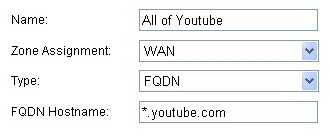FQDN Definition

Stands for “Fully Qualified Domain Name.” An FQDN is a domain name that includes a hostname. For example, the URL “www.techterms.com” is an FQDN since it contains a hostname (“www”) and a domain (“techterms.com”). The domain name “techterms.com” is not fully qualified because it does not include a hostname.
An FQDN can be broken down into three parts:
- Hostname: mail, ftp, store, support, etc.
- Domain: apple, microsoft, ibm, facebook, etc.
- Top level domain (TLD): .com, .net, .org, .co.uk, etc.
A fully qualified domain name has the format [hostname].[domain].[tld]. The hostname can be used to specify different services and protocols for a single domain. For example, “mail.example.com” is often the required FQDN format when configuring the SMTP server for an email account. The FQDN “ftp.example.com” is commonly used when connecting to an FTP server. Name servers must be FQDNs and typically use the naming convention “ns1.example.com” and “ns2.example.com”.
Subdomains used as website addresses are also fully qualified domain names. For example, CNET uses the “www.cnet.com” as its main website address, but uses the subdomain “download.cnet.com” for its download hosting website. The FQDN “download.cnet.com” uses the same HTTP protocol as “www.cnet.com,” but directs visitors to a different website.
NOTE: Many websites no longer include “www” in their URLs and therefore are not fully qualified domain names.